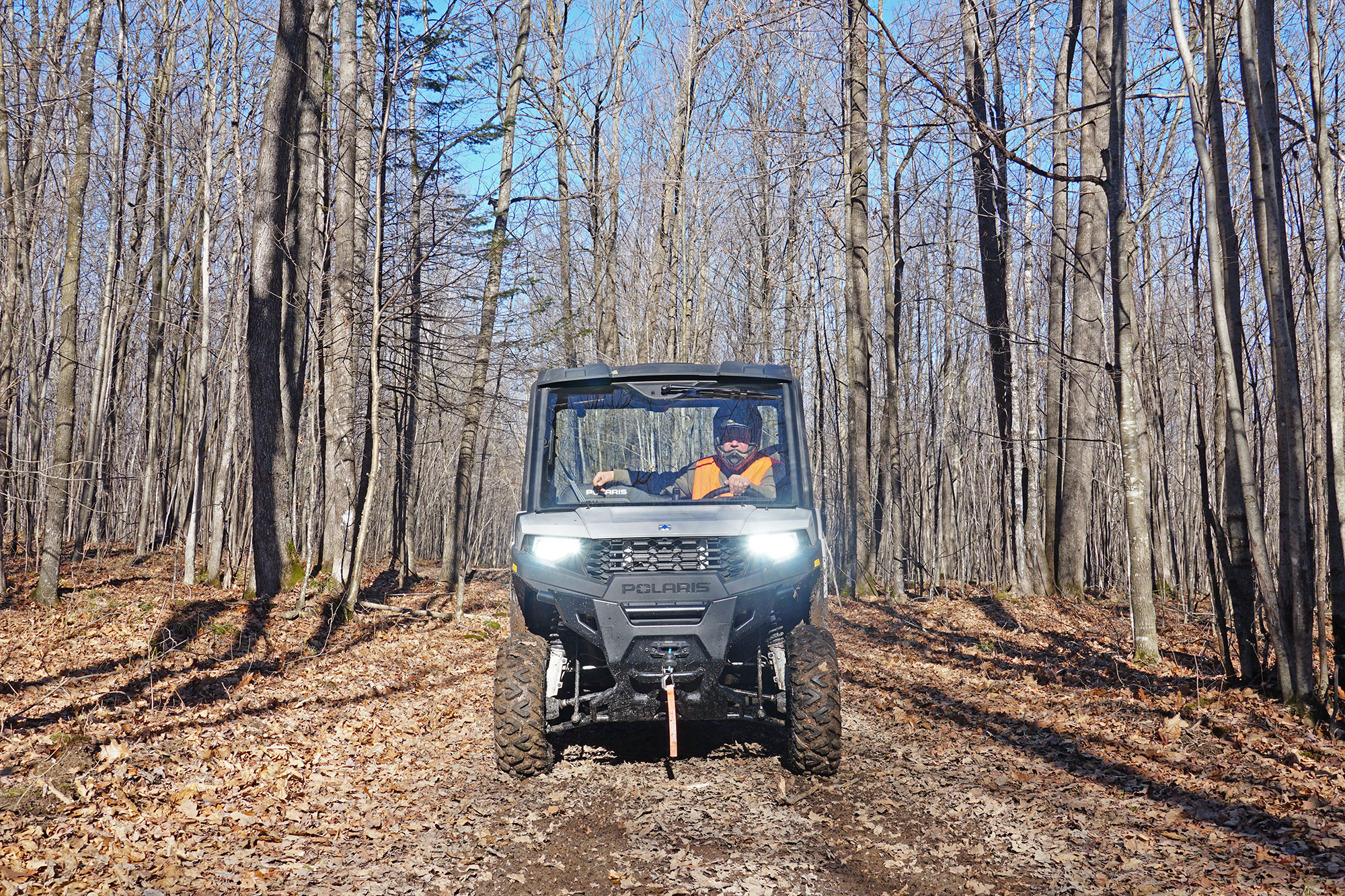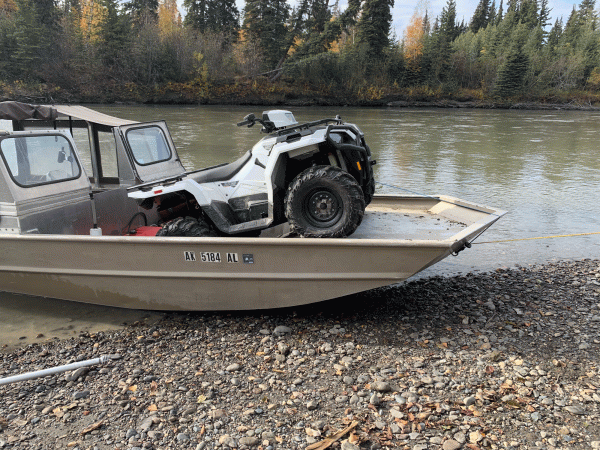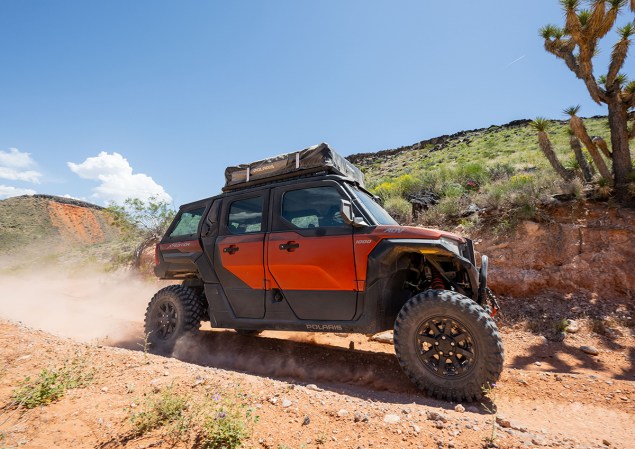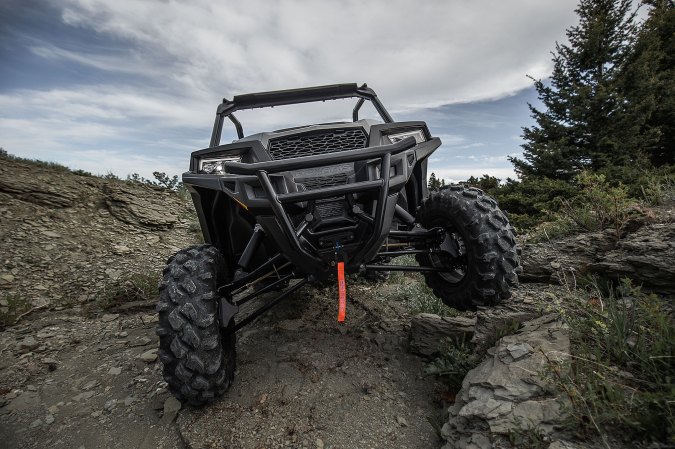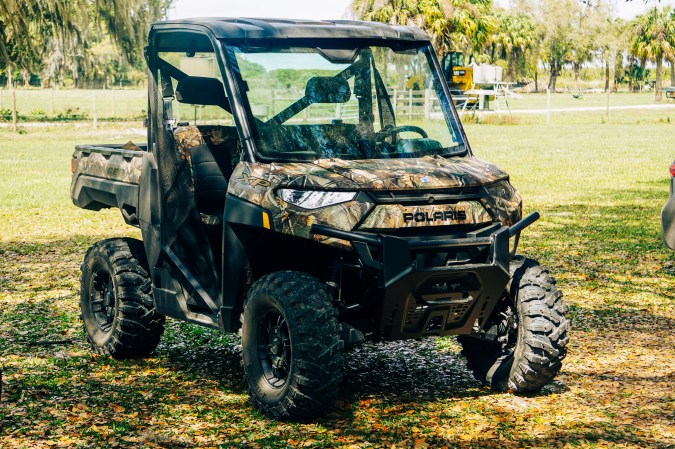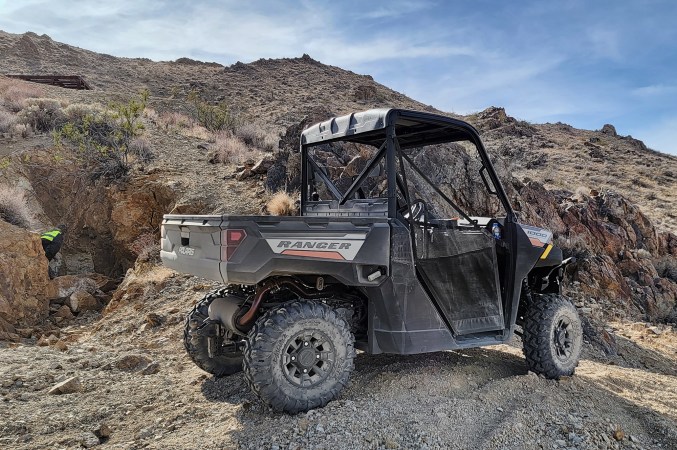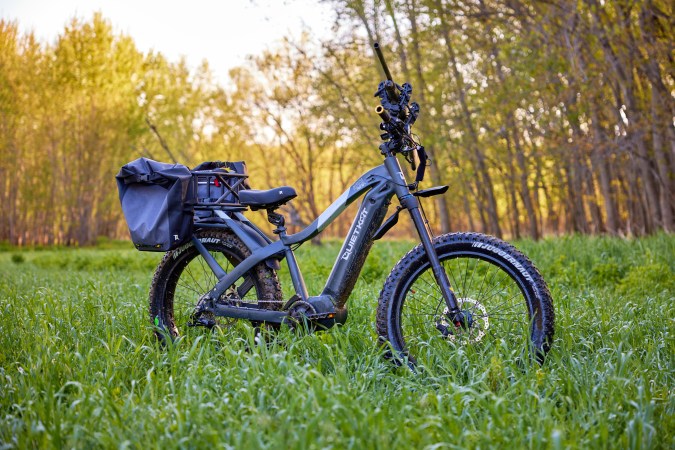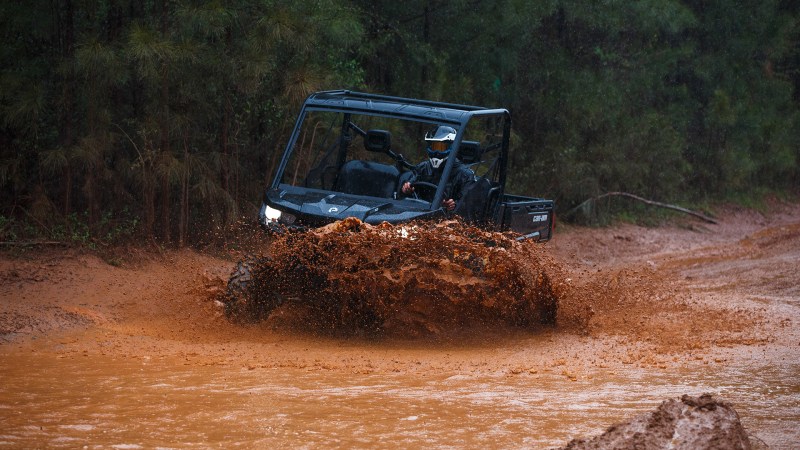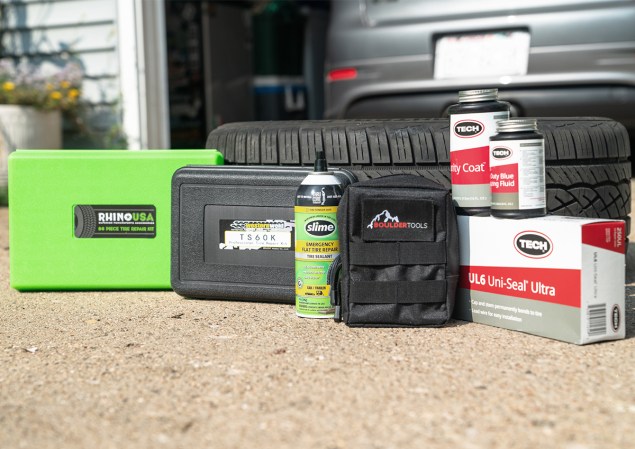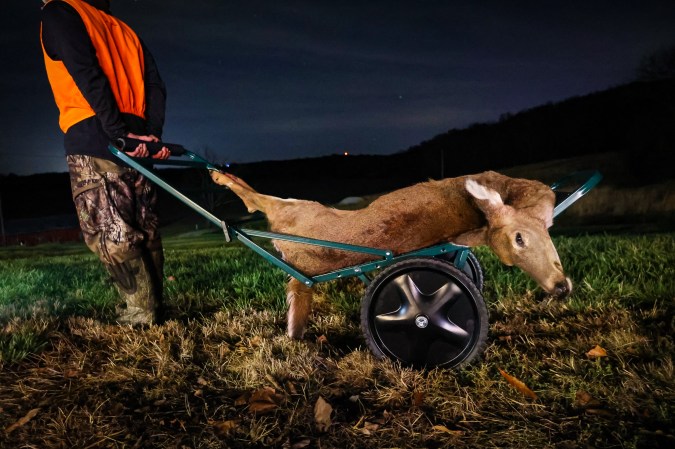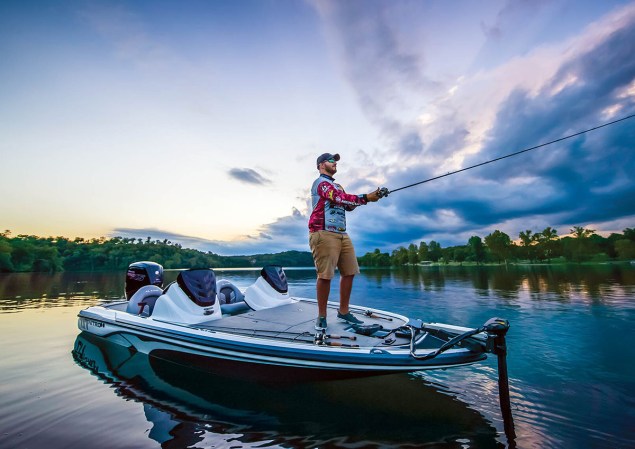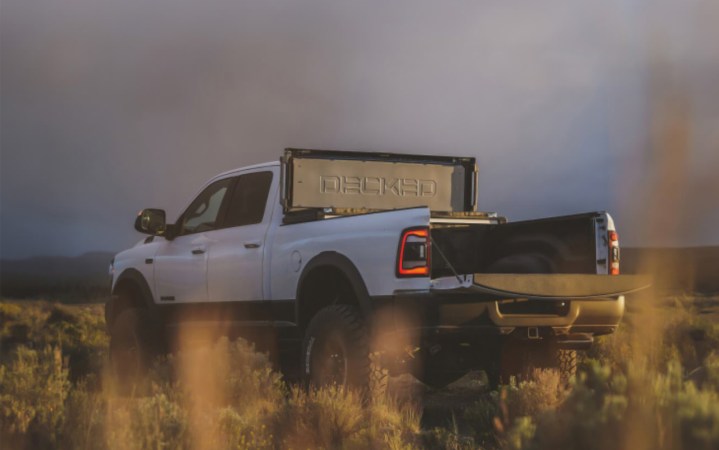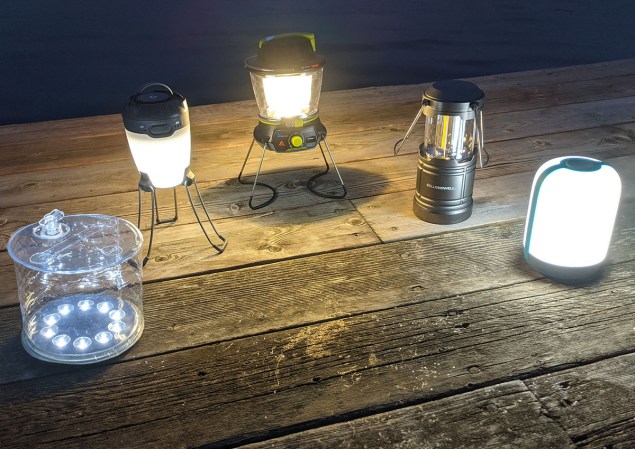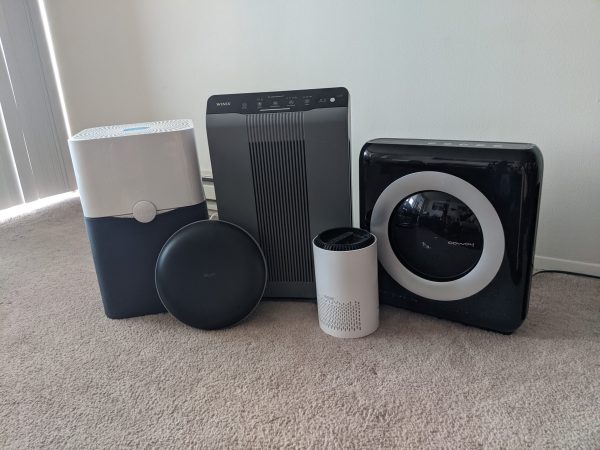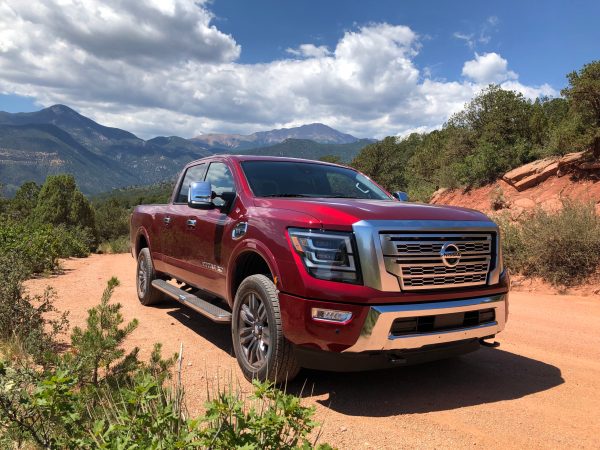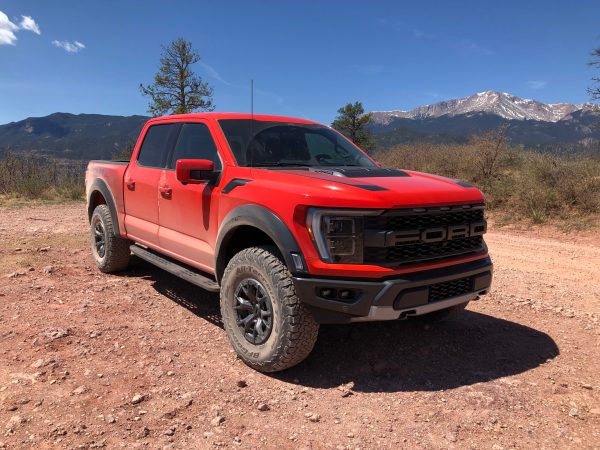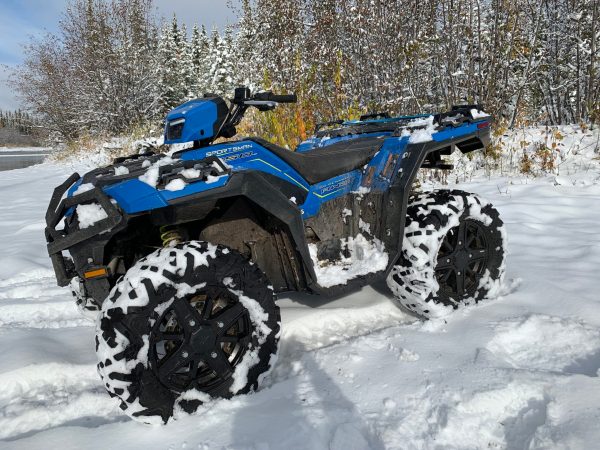We may earn revenue from the products available on this page and participate in affiliate programs. Learn More ›
UTVs keep getting bigger, better, and more expensive. Some of these vehicles, like Polaris’ Xpedition and Can-Am’s 6X6, are the size of small trucks. Those souped up vehicles are cool if you’re planning overlanding adventures, but they’re not ideal for getting work done at deer camp or on the farm. If you put ego and horsepower aside, for most of us, the most useful vehicle is a mid-sized UTV, and in this category, the Polaris Ranger still rules.
Last year, my buddies and I field tested a Polaris Ranger SP 570 Northstar for an entire hunting season. We put more than 400 miles on this vehicle, driving it down dirt roads, through fields (where we had permission of course), and along muddy trails. The Ranger handled everything we threw at it without showing any signs of wear or tear.
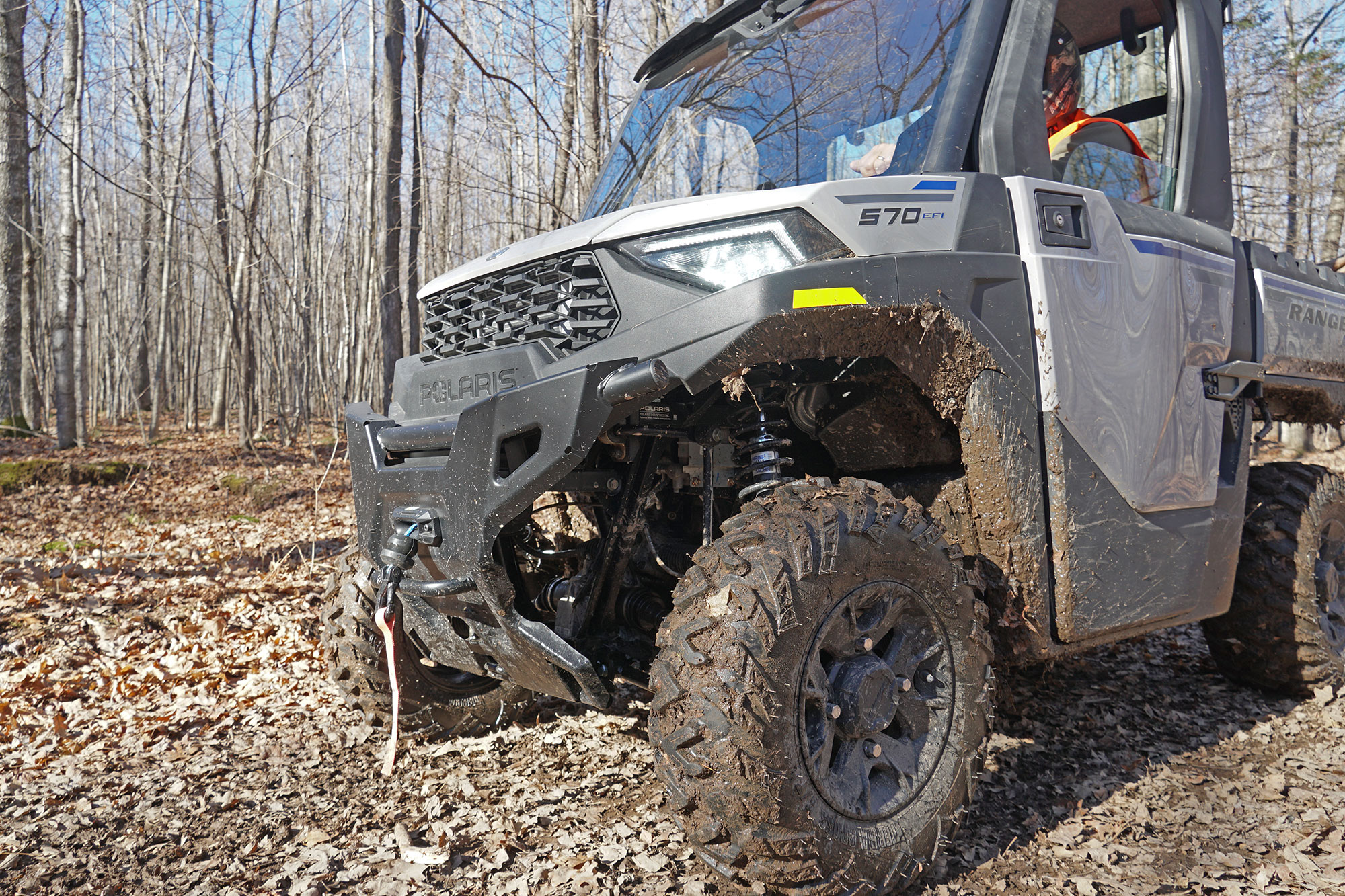
Photo by Alex Robinson
Ranger SP 570 Northstar Specs
- Engine: 4-Stroke Single Cylinder DOHC, 567 CC
- Horsepower: 44HP
- Torque: 35.4 LB-FT
- Drive System: On-Demand True AWD / 2WD / VersaTrac Turf Mode
- Dry Weight: 1,502 lbs
- Vehicle dimensions: 108 in. (L) x 58 in. (H) x 74 in. (W)
- Box capacity: 500 pounds
- Payload capacity: 700 pounds
- Hitch towing rating: 1,500 pounds
- MSRP: $19,299 (2023 version); $19,499 (2024 version)
Ranger SP 570 Northstar Features
- Integrated winch and plow mounts
- Electronic power steering
- Enclosed cab with glass windows
- Heat with Defrost
- Windshield wiper and washer fluid
- USB charging port
- Full coverage skid plate
- Storage bins under seat
- Bench seat (for two people)
- Crank windows
How We Tested the Ranger SP 570 Northstar
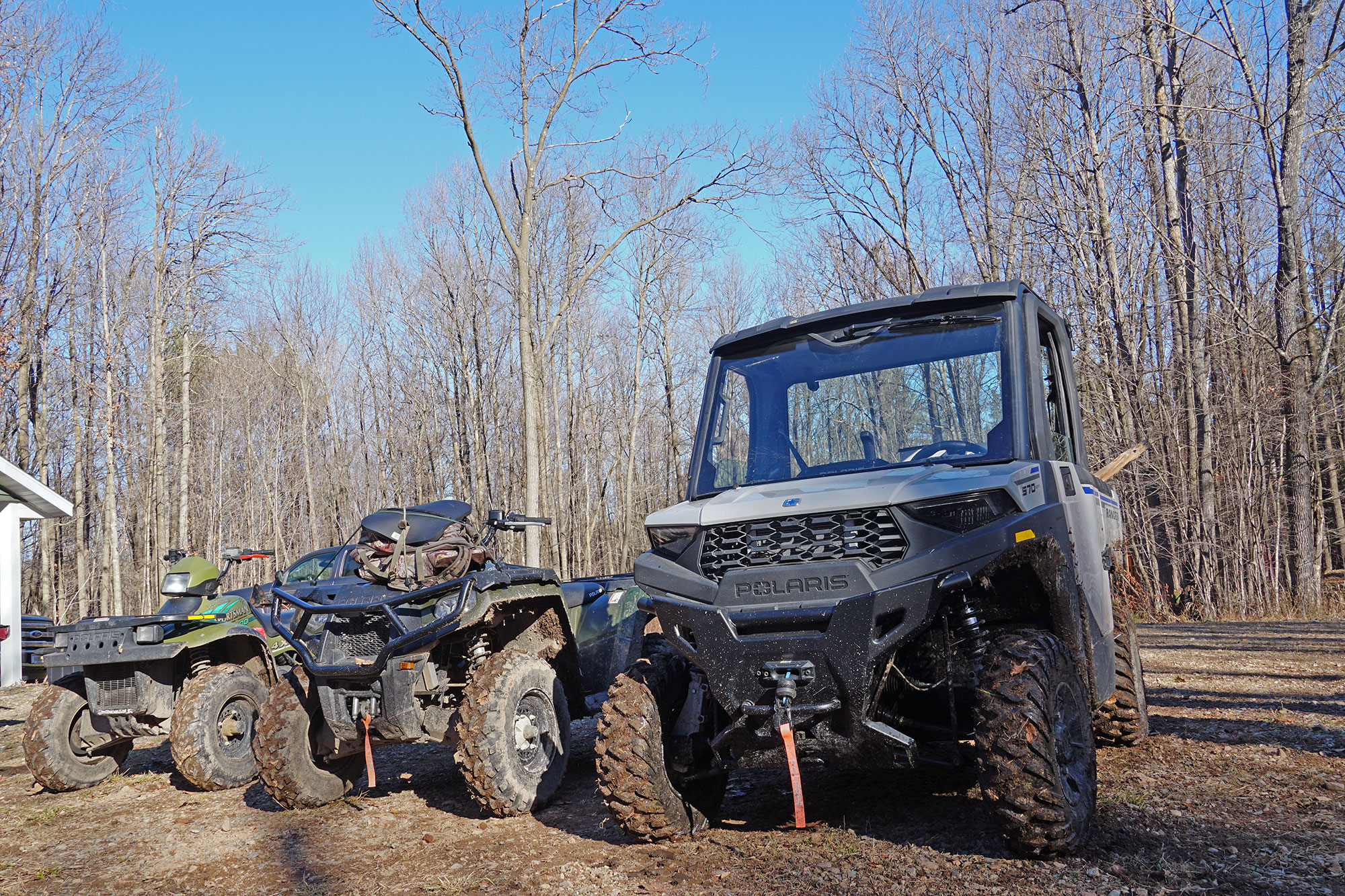
Photo by Alex Robinson
We drove the Ranger just as if it were our own vehicle. In summer we used it for hauling water to dove ponds, we loaded it up with brush for building blinds, and we transported equipment for maintaining a shooting range. My buddy Todd Gifford drove it around dirt roads in his neighborhood doing pest control work, and I trailered it up to my family deer camp in northern Wisconsin for opening weekend.
Neither Gifford nor I are mechanics nor are we gearheads. We’re hunters and outdoorsmen first and foremost. So what you won’t see here is a technical breakdown of the Ranger’s engineering. Instead, we’ll provide an honest assessment of the vehicle’s real-world performance, which turned out to be quite impressive.
How the Ranger SP 570 Performed
If I were to describe this version of the Ranger in just three words it would be: Durable, practical, and reliable. As Gifford puts it: “We put more than 400 miles on this thing, and then we cleaned it up, and it looked good as new. We’ve test driven different ATvs and UTVs for 10 years, and this is the first one that is perfect for what we do. It’s the bomb.”
For a hunting rig, simpler is often better. And while the Northstar version of the Ranger does have some slick features (more on these in a minute), it’s still a pretty simple vehicle overall. For example, the dash interior isn’t packed with a ton of buttons and switches. That makes it easy to keep clean and functioning. With almost a dozen vehicles we’ve had in the past, in some cases we’ve seen gauges and switches fail when the dashboard gets choked with dust (as commonly happens with a hunting rig, even on an enclosed cab).
On the durability front, we found the body of the vehicle to be impressively scratch and dent proof. We mercilessly ran the Ranger through brush with low-hanging branches bouncing off the windshield and thorns scraping the sides. But we never did find scratches in the body panels. Most other SXS we tested would have definitely shown signs of damage.
At one point I tried to fit the machine through a small gap between two trees, but I misjudged the gap and ended up ramming the side of the vehicle (right on the door panel) against an 8-inch-diameter maple. I was certain that whoopsie would result in enough damage that I’d have to report it to the good folks at Polaris. But, to my surprise, there wasn’t a dent, or even a scratch, in the door panel.
Size Matters
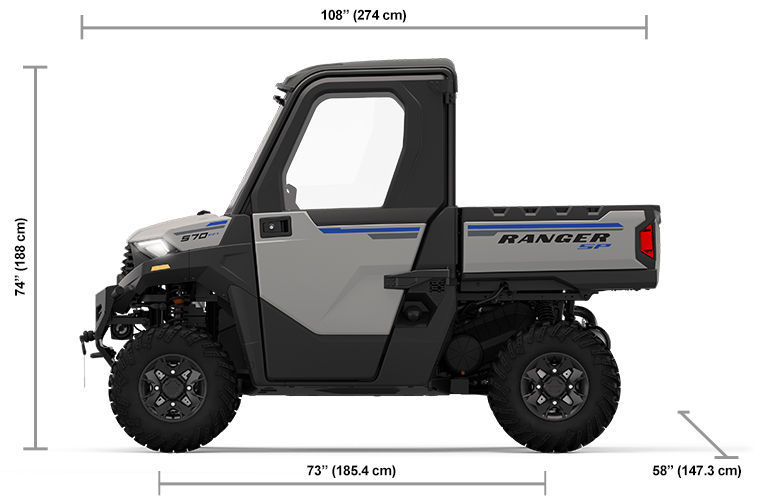
Polaris
The thing I like most about this vehicle is its smaller size. It’s a mid-size Ranger, so the bench seat fits two people. The full-size Ranger seats three across.
The smaller frame makes for a lighter, more maneuverable vehicle. I was able to drive it easily on my hunting property, taking all the same, tight, winding, brush choked trails that we usually ride with ATVs (The tree incident happened while I was bushwhacking through the woods to pick up a downed deer). Also, this little wheeler was a breeze to load in a trailer and tow down the highway. In some cases you’d be able to fit a mid-size Ranger into the back of a pickup without even needing a trailer. The vehicle’s dry weight was only 1,500 pounds.
Unless you’re transporting a crew of hunters, a smaller vehicle usually means less of a headache. This is in no small part because smaller, lighter vehicles tread more lightly on the landscape. Farmers are a lot more willing to let you drive in their fields if you’re running a small SXS vs a bigger rig that will sink into the mud and leave ruts.
“Landowners are really cool with it when they see you driving around something small,” Gifford says. “That’s the key to this little unit, it’s so mobile and it doesn’t leave a huge footprint, even when the conditions are wet and muddy.”
Additionally, the Ranger has a drive setting called Turf Mode. This mode unlocks the rear differential, meaning that the back wheels can rotate at different speeds. For example, when taking a corner in Turf Mode, one wheel drives while the other spins freely to avoid tearing the turf, according to Polaris. The rear right wheel is the powered wheel in Turf Mode, regardless of which direction the vehicle turns. In simple terms, this allows you to drive on grass or sensitive terrain without tearing it up. It also makes your turn radius tighter. It works wonderfully.

But one important note is that you don’t want to use Turf Mode while climbing, descending hills, or sidehilling. For uneven terrain you want to be in all-wheel-drive.
Ride and Handling
The 570 Ranger is not really a trail riding vehicle. It doesn’t bring a ton of power or top-end speed to the party. It’s just not what this vehicle is designed for. For reference, it has the same amount of horsepower as the 570 Sportsman ATV (which weighs about 600 pounds less).
However, the Ranger does offer a relatively smooth, comfortable ride. We didn’t get rattled to pieces while driving over washboard gravel and the vehicle handled rough trails like a champ.
With the enclosed cab and narrower width, this mid-size Ranger does feel a bit top heavy while driving. You do not want to take sharp turns too quickly or you risk rolling it. But for hunting and doing chores, you shouldn’t be ripping around like a wildman anyway.
Notably, the 2024 version of the 570 Ranger is getting a tire upgrade with new 25-inch 8-ply Pro Armor X-Terrain tires for added durability and better puncture resistance.
Enclosed Cab
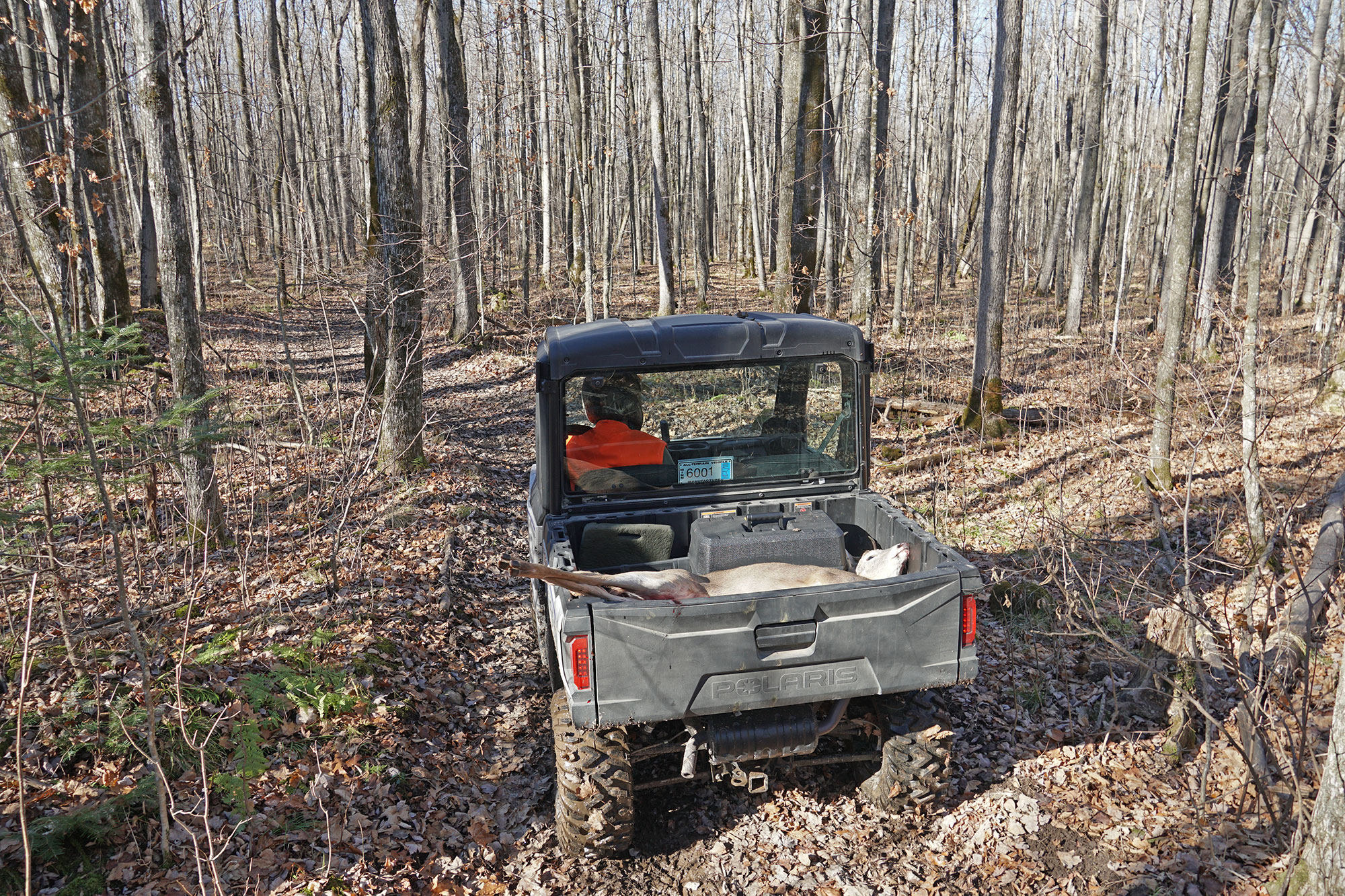
Photo by Alex Robinson
You can find a base version of the 570 Ranger (without the enclosed cab) for an incredibly reasonable MSRP of $11,699. However, if you can afford it, the enclosed cab on the Northstar edition is well worth it. The fully-enclosed cab combined with heat and defrost make this a true four-season vehicle in the North Country.
Here in Minnesota it’s not uncommon for us to see sub-zero temperatures by early December (this year was an exception). Running down the road in an open SXS in frigid temperatures is brutal. You’ve got to fully suit up with goggles and a facemask as if you were going snowmobiling. That takes away from the convenience of just hopping in the SXS for a short run.
“It’s really miserable and you end up just wanting to take the truck instead,” Gifford says.
That is not the case with the Northstar, which heats up in minutes. On opening day of deer season I had the window fully defrosted and the cab toasty warm for a comfortable ride to my hunting area. The enclosed cab is even more critical if you intend to use the Ranger for plowing snow. It also helps keep road dust out of your face and prevents sticks and branches from hitting you while you drive down tight trails in the woods. All of these features are especially nice when you’re driving around kids.
Anything you want to keep out of the elements can be stored in dry boxes beneath the seat.
I’m 6 feet 2 inches and I fit in the cab comfortably enough, even on longer rides. However if you’re a bigger dude, you’d want to consider going with a full-size SXS. One thing we especially liked about the cab was the bench seats, with no arm rests. Some UTVs have molded seats and/or arm rests that are constraining and end up just getting in the way. With the simple bench seat you can hop in and out quickly and without hassle.
Read Next: Best ATV Helmets
What the Ranger SP 570 Did Best
This vehicle packs a lot of performance into a small, light, and relatively affordable package. We ended up using it all the time. This saved us money on gas and wear and tear on our trucks because it was often easier to just hop in the Ranger. I realize that $20K for a side-by-side is not cheap, but these days it’s about as good of a deal as you’ll find for a machine of this quality with this set of features, most notably the integrated winch, enclosed cab, and heat.
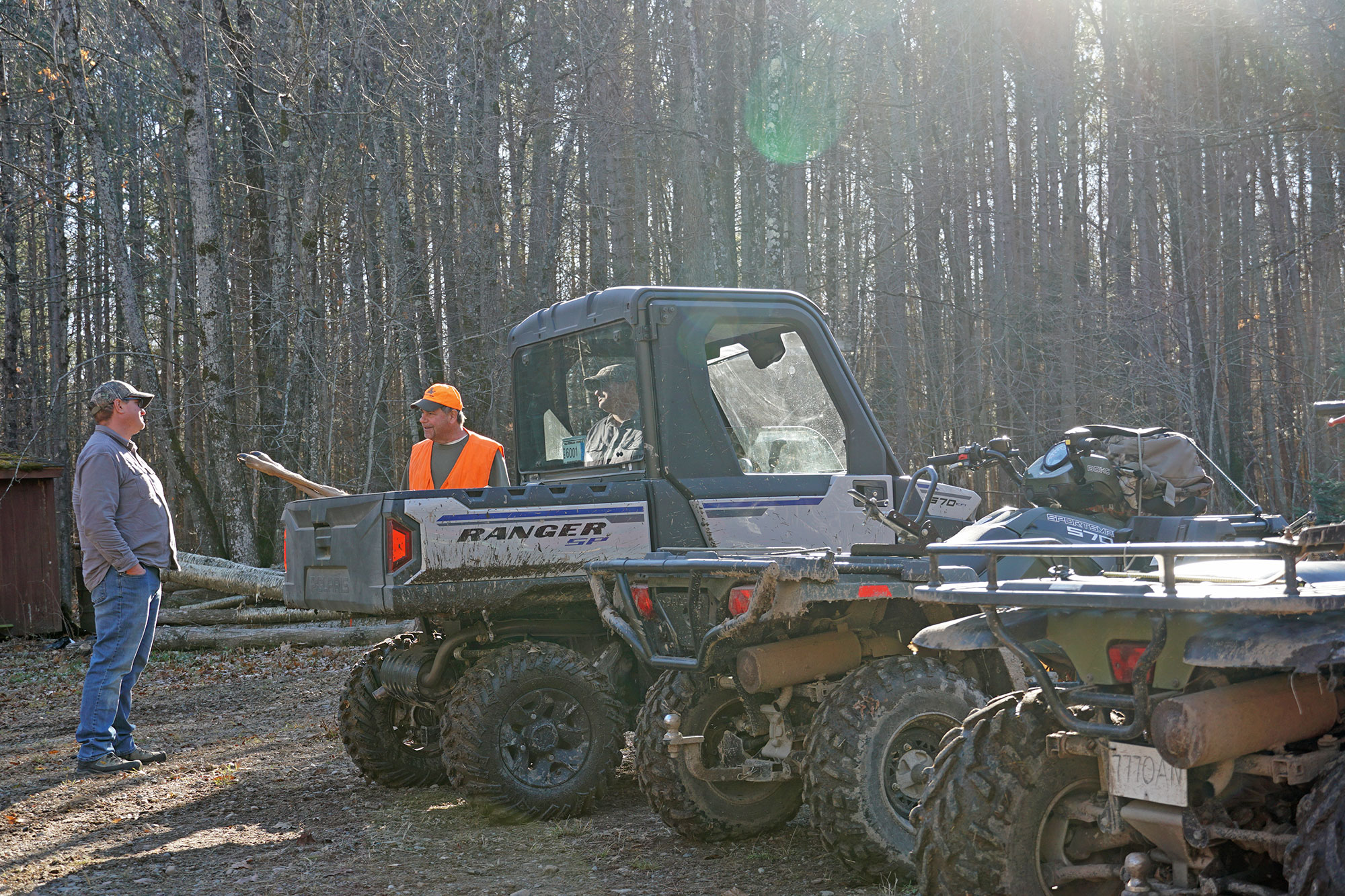
Photo by Alex Robinson
Where the Ranger SP 570 Could Improve
You don’t get much power with the 570 version of the Ranger. That’s not a criticism of the vehicle, more a simple reality of the tradeoff in the matrix of size vs performance vs price. There is of course the full-size Ranger XD 1500 which offers 110 horsepower. But it’s also going to cost you about twice as much as the rig we tested.
Final Thoughts
If you want an affordable workhorse that has some nice features but isn’t fancy, well, you won’t do better than the Polaris Ranger 570 SP Northstar. If you live in warm, southern climates, you can probably get away without the enclosed cab. But, if you live up North, and your budget can swing it, upgrading to the enclosed cab is well worth it. You’ll use the vehicle more often and get much more value out of it.

